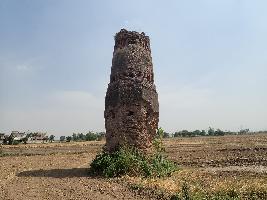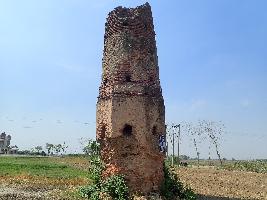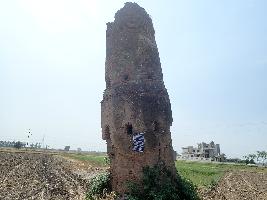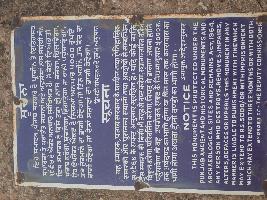



Kos Minar, Sirhind: A Timeless Landmark of Mughal India The Kos Minar in Sirhind, Punjab, is part of a series of historical milestones erected during the Mughal era, primarily under the reign of Emperor Sher Shah Suri and later expanded by Emperor Akbar. These minarets served as distance markers along the Grand Trunk Road, one of the longest and most significant trade and travel routes in Indian history. Standing tall, the Kos Minar is a unique symbol of India's ancient road systems, used to measure the distance travelers had covered, with one kos equating to approximately 3.22 kilometers (2 miles). Historical Significance The Kos Minars were initially established during the rule of Sher Shah Suri in the 16th century to provide guidance and convenience to traders, travelers, and military caravans on their journeys. The minars marked every kos (roughly two miles) along major roads, helping people estimate the distance covered. Sirhind, being a prominent town on the Grand Trunk Road, became home to several of these minarets, of which a few still stand today. Apart from their functional use, these milestones also played an important role in the Mughal administrative and communication systems. Couriers and postal services utilized these markers to ensure messages and goods were delivered efficiently across the empire. As an enduring legacy of the era’s road networks, the Kos Minars remain a testament to the advanced infrastructure and governance of Mughal India. Architectural Simplicity Kos Minars are characterized by their simplicity yet serve as remarkable examples of medieval engineering. Constructed from brick and mortar, the minarets stand at a height of about 30 feet. Their cylindrical shape narrows as it rises, with a domed top adding a sense of grandeur. Though devoid of elaborate carvings or decorations, their presence alone speaks volumes about their utilitarian purpose and the efficient road management system of that era. In its modern-day context, the Kos Minar serves as a point of reflection on how centuries-old roadways facilitated trade, travel, and communication across vast empires. Visiting these landmarks provides travelers with a chance to connect with the region's past and understand the importance of Sirhind as a key location on this ancient highway.